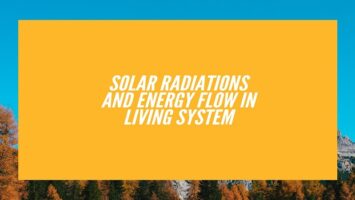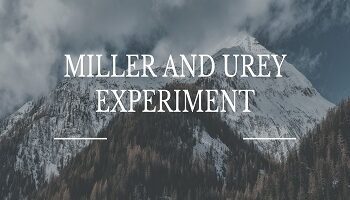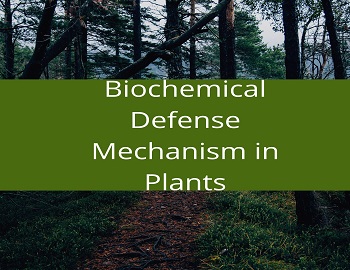Table of Contents
Write Briefly about the Radioactive Pollution.
It is a special form of pollution that is related to air, water, and soil. It is caused by radioactive substances when they disintegrate in nature. Each atomic nucleus is characterized as nuclides having a constant decay rate (Half rate). Radioactive pollution has increased recently and is caused by both naturally as well as by man-made. Cosmic rays of outer space and radio-nuclides of the earth’s crust such as Radium 224, Uranium 235, and Thorium 232 are the natural sources of radioactive pollution. Man-made sources of pollution are caused by to production and explosion of nuclear weapons, nuclear power plants, fuels, and preparation of radioactive isotopes.
The nuclear explosions are an uncontrolled chain reaction which gives rise to neutron flux in the surrounding environment. These materials are strontium-90, caesium-137, and iodine-131 which contaminate the environment. During raindrops, they fall on the ground into the soil particles and finally enter the food chain. Similarly, reactors and nuclear fuel release large amounts of radioactive wastes coating excess of fission and activation products. A large number of radioisotopes such as 14C, 125I, and 32P are mixed into rivers and lakes as waste and enter the food chain through fishes and other aquatic life.
Effects- The effects of radioactive pollution are very disastrous and they depend upon half-life, energy-releasing capacity, rate of diffusion, and rate of deposition of the contaminate. The human species is the final victim of these radiations because the high dosage of these radiations definitely causes death. Long exposure to these radiations causes cancer, leukemia, sterility, and mutations.
Control- To control the radioactive pollution:
- The atomic reactors should be leak-proof.
- Its safety measures should be strictly followed.
- Its waste disposal must be safe.
- Regular monitoring through frequent sampling should be done in the risky areas.
- Radioactive wastes with sufficient low radiations should be discharged into the sewage.
Discuss briefly about the radioactive wastes.
The radioactive wastes given out by nuclear reactors are extremely toxic and their safe disposal is a serious inherent problem. These wastes cause mutations in biological organisms at a very high rate and result in cancer or lethal. Therefore, nuclear wastes are extremely potent pollutants and utmost care must be taken in their safe disposal. It is recommended that radioactive wastes after sufficient treatment should be kept in suitably shielded containers and be buried within the rocks, about 500 m deep below the earth’s surface.
Do you prefer thermal power plants or atomic power plants for energy supply? Evaluate your preference in terms of pollution caused by them.
Thermal Power Plants:
- Advantages:
- Relatively inexpensive to build and operate.
- Can be located near fuel sources (e.g., coal mines or natural gas fields).
- Can quickly respond to changes in electricity demand.
- Disadvantages:
- High greenhouse gas emissions: Coal and natural gas power plants release significant amounts of carbon dioxide (CO2), contributing to climate change.
- Air pollution: Thermal plants release other pollutants, including sulfur dioxide (SO2), nitrogen oxides (NOx), and particulate matter, which can harm air quality and human health.
- Water consumption: Many thermal power plants require large amounts of water for cooling, which can stress local water resources.
Nuclear Power Plants:
- Advantages:
- Low greenhouse gas emissions: Nuclear power produces electricity with minimal CO2 emissions, making it a low-carbon energy source.
- High energy density: Nuclear fuel provides a concentrated energy source, allowing for a small amount of fuel to generate a significant amount of electricity.
- Stable baseload power: Nuclear plants can provide a constant and reliable supply of electricity, reducing the need for backup power sources.
- Disadvantages:
- Nuclear accidents: Accidents like Chernobyl and Fukushima have highlighted the potential catastrophic consequences of nuclear accidents.
- Radioactive waste: Nuclear power generates radioactive waste that requires secure long-term storage and management.
- High upfront costs: Building and decommissioning nuclear plants can be expensive, and there are often delays and cost overruns in construction projects.
In terms of pollution, nuclear power plants are generally considered to be cleaner than thermal power plants because they do not produce significant greenhouse gases during electricity generation. However, they do pose risks associated with nuclear accidents and the management of radioactive waste.
The choice between thermal and nuclear power plants depends on various factors, including energy needs, environmental concerns, cost considerations, and the availability of alternative energy sources. Many countries are exploring a mix of energy sources, including renewables like solar and wind, to reduce the environmental impact of their energy generation.
How do nuclear power plants upset ecological balance?
Radioactive wastes from atomic plants are discharged into rivers or streams and affect the aquatic plants and animals to a very great extent. These radioactive wastes enter the food chain and result in their biomagnification. They cause ionization of various body fluids and kill the members of the food chain. So, they ultimately disturb the ecological balance in nature.









Comments (No)